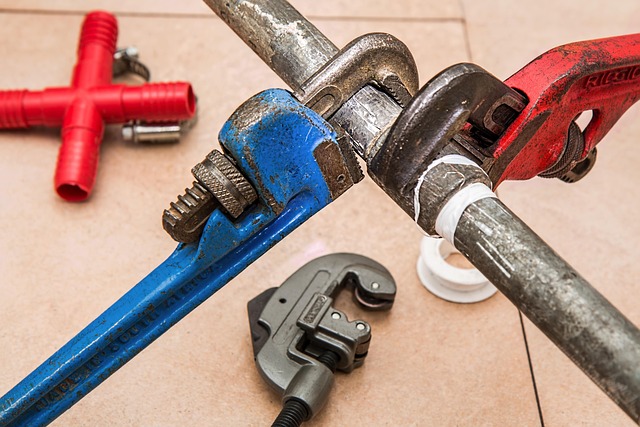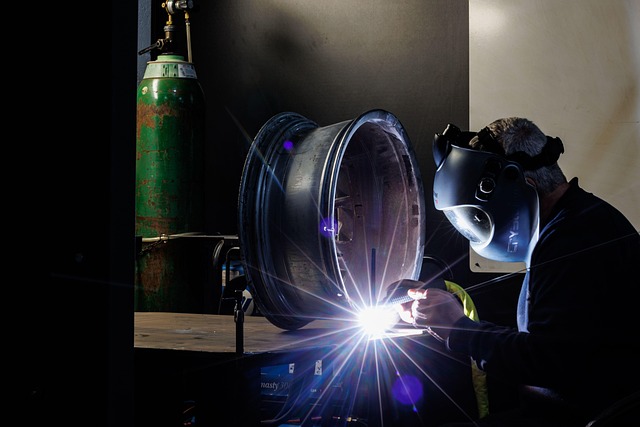Concrete wall crack repair requires understanding causes like settlement, frost heave, and drought. Assess crack severity for appropriate methods – from cosmetic to structural interventions. Safety first: wear protective gear. Clean, scrape loose concrete, and choose right materials (epoxy, mortar, composites). Use flexible polymeric materials for sealing to prevent water intrusion and expansion. For major gaps, prepare, apply patch or new mix, and cure. Avoid common mistakes, do regular maintenance checks, and promptly address new cracks. DIY for minor cracks; seek professionals for complex issues with warranties. Conduct structural integrity assessments for proactive solutions.
Concrete walls, despite their durability, can develop cracks over time. This comprehensive guide delves into the world of crack repair, offering a step-by-step approach to restoring structural integrity. We explore various crack types, from structural to cosmetic, and equip you with knowledge on safety preparation and material selection. Learn techniques for effective filling and sealing, along with maintenance tips for longevity. Discover when DIY is feasible and when professional assistance is essential, ensuring your concrete walls remain robust and crack-free.
Understanding Crack Types and Causes

Crack repair in concrete walls is a common task for homeowners and contractors alike, but addressing the issue effectively requires understanding the types and causes of these cracks. Concrete walls can develop various cracks, from hairline fractures to wider, structural gaps. These cracks may appear as vertical, horizontal, or diagonal lines and can vary in their severity.
The primary causes of concrete wall cracks include environmental factors like settlement, frost heave, and drought, as well as internal stressors such as poor initial construction, heavy loads, and movement within the foundation. Identifying the specific crack type is crucial for selecting the right repair method. For instance, while hairline cracks might be purely cosmetic, larger cracks could indicate more serious structural issues that demand professional attention.
Preparation: Safety and Surface Readiness

Before starting any crack repair on a concrete wall, safety should be your top priority. Proper protective gear, including gloves, goggles, and a respirator mask, is essential to prevent exposure to dust and chemicals. Additionally, ensure the surface is clean, dry, and free from grease or oil, as these can interfere with the adhesion of repair compounds. Scrape away any loose concrete or debris using a wire brush or chisel, creating a rough texture that will enhance bonding. This preparation step is crucial for achieving a strong, lasting crack repair.
Choosing the Right Repair Materials

When it comes to repairing a concrete wall, selecting the appropriate materials is half the battle won. The first step in choosing the right repair method is identifying the type and extent of damage, such as cracks. Crack repair is a common concern for concrete walls, and there are various options available. Each crack repair technique requires specific products, ensuring you pick the right ones will guarantee long-lasting results.
For smaller cracks, a simple epoxy injection or mortar patching might be sufficient. These quick fixes offer temporary solutions but can be effective in preventing further damage. For larger cracks or structural issues, a more comprehensive approach is necessary. This may involve replacing sections of the wall or using specialized concrete repair composites that mimic the original material’s strength and durability.
Techniques for Crack Filling and Sealing

Crack repair is a crucial step in concrete wall maintenance. The first technique involves filling cracks with a flexible polymeric material that matches the concrete’s composition. This not only stops water intrusion but also prevents further expansion and contraction of the crack due to temperature changes, ensuring longevity. After cleaning and preparing the crack surface, the polymer is injected using pressure or hand tools, effectively sealing it against moisture and contaminants.
Sealing plays a complementary role by applying a thin coat of waterproof sealant over the repaired cracks. This barrier protects the concrete from corrosive elements, UV radiation, and extreme temperatures. Sealants can be either penetrating or non-penetrating, with the former soaking into the concrete for deeper protection while the latter forms a protective film on the surface. Regular crack filling and sealing can extend the life of concrete walls, preserving their structural integrity and aesthetic appeal.
Step-by-Step Concrete Wall Repair Process

The concrete wall repair process involves several steps to ensure a sturdy and aesthetically pleasing result. First, assess the damage by examining the cracks, their severity, and patterns. This step is crucial as it determines the extent of repair needed. For minor cracks, crack repair can be as simple as cleaning the area, applying an appropriate epoxy or polymer, and letting it set.
Once the crack has been filled and hardened, the next stage involves preparing the surrounding concrete for patching. This might include removing loose debris, chiseling out any damaged or deteriorated sections, and ensuring the surface is clean and dry. After preparation, apply a patch or new concrete mix to fill gaps, using tools like trowels to achieve a smooth finish. Finally, allow the repair area to cure completely before considering the job complete.
Common Mistakes to Avoid During Repair

When repairing a concrete wall, common mistakes can lead to long-term structural issues and unsightly outcomes. One of the most frequent errors is failing to address the root cause of cracks. Surface repairs alone won’t provide lasting solutions; it’s crucial to understand if cracks are due to settlement, shifting soil, or underlying issues like poor original construction. Attempting DIY fixes without proper knowledge can also be detrimental, especially for complex damages.
Another mistake is using incompatible materials or techniques, which can cause future problems. Different types of concrete require specific repair methods and products. Using the wrong sealants or not following manufacturer instructions can compromise the durability of the repair work. Regular maintenance checks are often overlooked; regular inspections help identify minor issues before they become major cracks, preventing the need for extensive repairs later on.
Longevity: Maintenance Tips After Repair

After successfully repairing a concrete wall, ensuring its longevity requires regular maintenance and careful attention. Regular inspection is key; checking for any new cracks, especially around repair areas, is essential. Promptly addressing even the smallest cracks can prevent further damage and costly repairs.
Simple steps like cleaning the wall surface to remove dirt and moisture, applying a suitable sealant, and using appropriate materials for touch-ups can significantly extend the life of the repair. Maintaining proper drainage around the wall and preventing excessive water exposure are crucial. Additionally, avoiding heavy loads or excessive pressure on the repaired area will contribute to its durability.
Professional vs DIY Crack Repair: When to Hire Experts

When it comes to crack repair, deciding between professional services and DIY methods is crucial. While some cracks may be minor and easily fixable by homeowners, larger or more complex cracks often require expert knowledge and specialized equipment. Professional crack repair services have access to advanced techniques and materials designed specifically for concrete walls, ensuring long-lasting results.
Hiring experts is particularly recommended for structural integrity issues, as professionals can accurately assess the extent of the damage and provide solutions tailored to the specific needs of the wall. Moreover, professional crack repair often comes with warranties, offering peace of mind that the job was done right. DIY methods might be suitable for small, non-structural cracks, but for significant repairs, seeking expert intervention is generally the safer and more effective choice.
Future Prevention: Structural Integrity Assessment

To prevent future concrete wall repairs, conducting a thorough structural integrity assessment is essential. This involves meticulously examining the entire wall for any signs of stress or damage, paying close attention to areas prone to cracking. By identifying weak points before they become significant issues, you can take proactive measures to reinforce the structure. Regular maintenance and crack repair are key; addressing even the smallest cracks early on can save substantial costs and effort in the long run.
A structural integrity assessment should consider factors like the age of the wall, local climate conditions, and the type of construction used. Professionals skilled in concrete restoration can guide homeowners or building managers through this process, offering tailored solutions to ensure the longevity and stability of the structure. This proactive approach not only preserves the aesthetic appeal of the walls but also safeguards the safety and soundness of the entire building.
